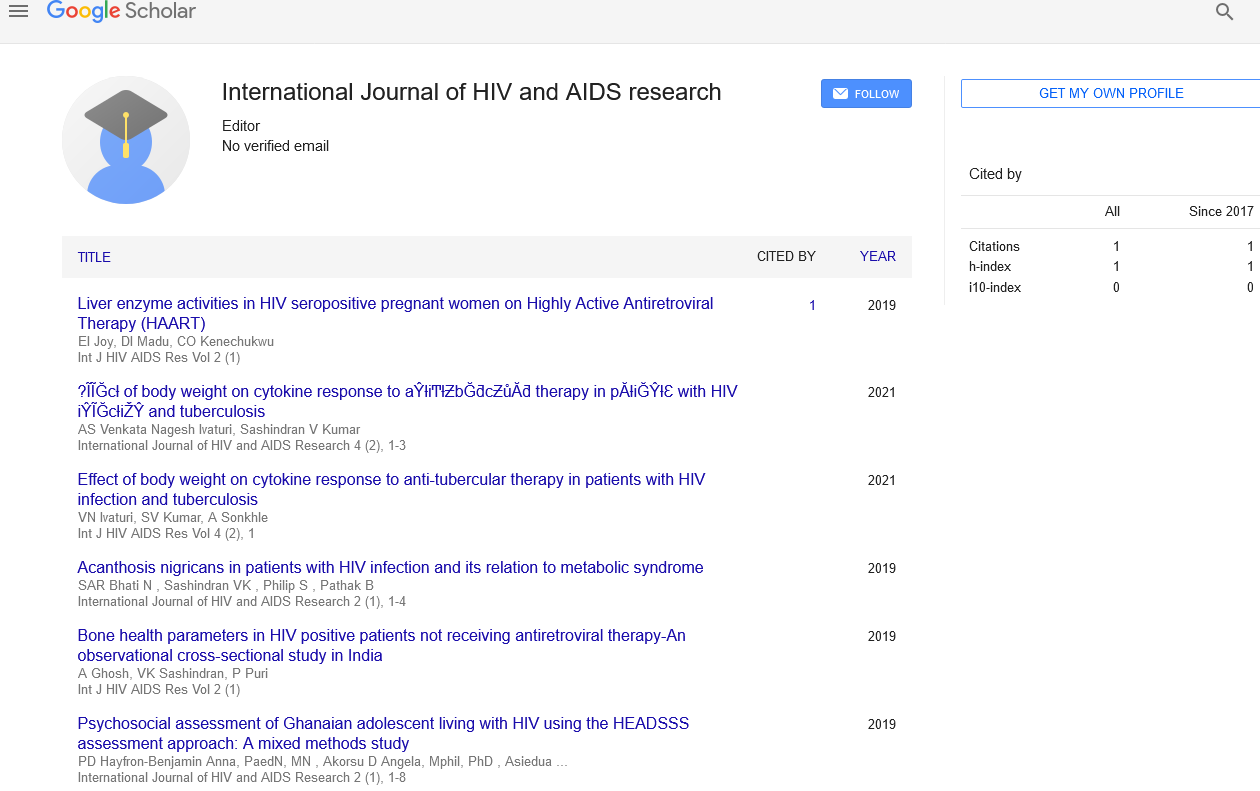
Sign up for email alert when new content gets added: Sign up
Direct testing for Acanthamoeba in UAE water
International Conference on Sexually Transmitted Diseases, AIDS and Parasitic Infections & Parasitology, Infectious Diseases, STDs and STIs
September 21-22, 2017 San Antonio, TX, USA
Amna Al Otaiba and Selwa Alsam
University of Essex, UK
ScientificTracks Abstracts: J HIV AIDS Res
Abstract :
Acanthamoeba is a microscopic free-living ameba characterized as single-celled living organism that can cause rare but severe infections of the eye, skin, and central nervous system. Acanthamoeba is found worldwide in the environment in water and soil. Acanthamoeba can be spread to the eyes through contact lens use, cuts, or skin wounds or by being inhaled into the lungs. The double-layered coat of Acanthamoeba cyst enables it to survive in the presence of disinfectants. It can also tolerate wide range of temperature from â�?�?2�?°C to 45�?°C. A variety of microorganism, such as Escherichia coli (E.coli) nest inside Acanthamoeba in the form of endosymbiont as amoeba-associated bacteria. In the United Arab Emirates (UAE) Acanthamoeba and associated endosymbiont bacteria are not yet studied, hence this study in which variety of water samples were tested for the presence of Acanthamoeba. 55 water samples were tested for Acanthamoeba presence. Water samples were filtered through 0.25 micrometer nitrocellulose membranes. Filters were incubated for 2 to three weeks at 30oC using non-nutrient agar petri plates enriched with heat killed E. coli. Plates were examined microscopically for existence of Acanthamoeba tracks. Acanthamoeba were removed from the surface and propagated axenically using Peptone Yeast Glucose (PYG) medium. Cysts and trophozoites were characterized by morphology, PCR, Nested PCR, and ELISA techniques. In PCR and Nested PCR, DNA was extracted and amplified using the primers JDP1 and JDP2. Results from traditional PCR requires prolonged period of time. Nested PCR was used in which the primers JDP1 and P3rev were used and the product of this amplification was amplified once again using the P2fw and JDP2. Results indicated existence of Acanthamoeba. For further identification ELISA technics was utilized in which a flat bottom 96 wells polystyrene plates was incubated with (rat anti Acanthamoeba polyclonal antibodies) for 1 hour at room temperature using carbonate/bicarbonate buffer. Followed by washing with PBS buffer and incubating with Acanthamoeba PBS suspension of 1000 cells/ml followed by another washing and incubation with the second antibody anti-mouse IGG peroxidase for one hour at room temperature. Peroxidase substrate with colorimetric chromagen were added and incubated for 30 minutes. Reaction was stopped by adding 3N HCl and read by ELISA reader. ELISA results confirmed with great confidence the presence of Acanthamoeba in water. Results indicated that ELISA technic can be utilized with great accuracy to detect directly the presence of Acanthamoeba in water samples.
Biography :
Amna Al Otaiba is a PhD student under supervision of Selwa Alsam at the School of Biological Sciences, University of Essex. She has published about 8 articles in refereed journals serving as Director of Environment Department at Al Ain Wildlife Park and Resort in UAE. She has 17 years of experience in the field of Environment and attended many international scientific conferences.




